I’m back in Jamaica and we are wrapping up the Jamaica Awareness of Mangrove in Nature (J.A.M.I.N.) project. The energy at the schools is electric. As a former secondary school teacher, I can relate to the hustle and bustle of grading papers, the constant flow of students in and out of the classroom, and the excitement that comes along with the end of the academic year.
Currently, the students are preparing to take their exams, which allow them to enter into the next grade level. In the midst of their busy schedules, the students take time out from studying to plant the mangrove propagules (a seed-like structure) that they have been growing during the J.A.M.I.N. project for the past 8 months.
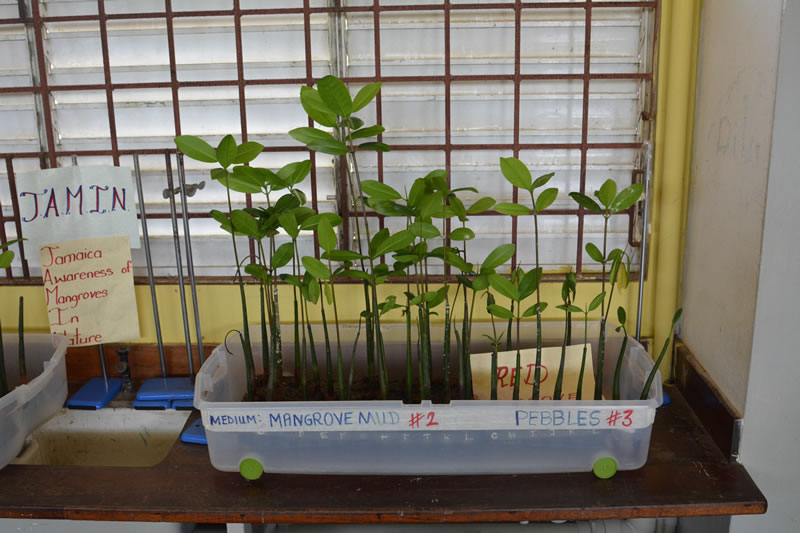
Mangrove propagules students have been growing for the past 8 months as part of the J.A.M.I.N. project.
Today, we are restoring the mangroves and it’s a bittersweet feeling. On one hand, it is the end of a successful pilot project, and on the other, it signifies the culmination of a year working with students and teachers on mangrove education and restoration. As an educator, I often feel like a mother duck leading her ducklings to adulthood. Although I wasn’t in the classroom with these students everyday, I still feel like a proud mother duck watching many of these students move on to the next level of high school or going off to university to pursue degrees.
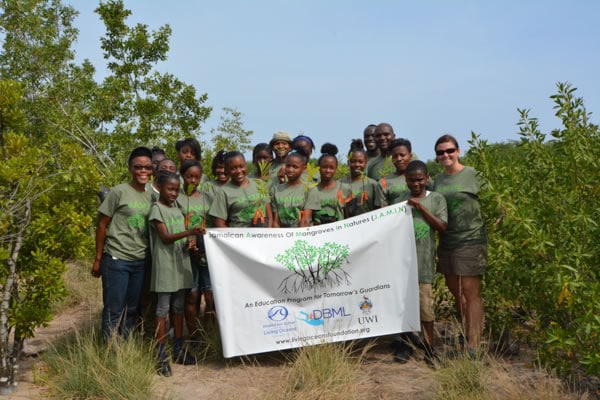
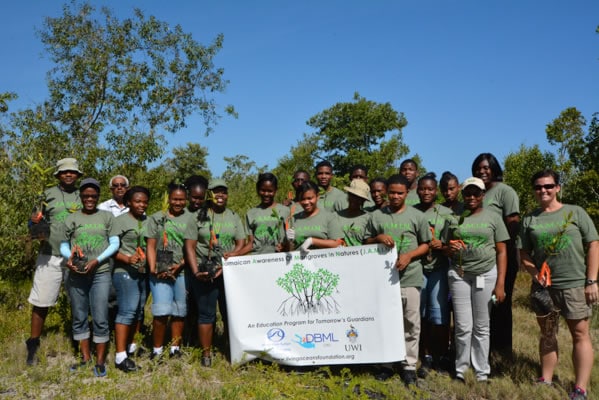
Jamaican high school students at the end of the JAMIN pilot project. Holland High School (left) and William Knibb High School (right).
(click-thru on images for greater detail)
It’s spring in Jamaica and the sun is already out in full force at 7 am. The weather forecasters predict that it will be in the nineties today in Jamaica, so we planned an early morning restoration. Camilo Trench, our partner at the University of the West Indies Discovery Bay Marine Lab, and I pack up the truck with shovels, gloves, lots of water, and the mangrove propagules, and we head to the restoration site in Falmouth.
For the past couple of weeks, Camilo has been gradually acclimating the seedlings from the fresh water (that they have been growing in for the past several months) to salt water, so that they can more easily adapt to their natural environment once we plant them.
When we get to the site, we come up with a plan on where to plant the propagules, and then we wait for the school’s bus to arrive. When it arrives, the students enthusiastically hop off the bus and they are smiling from ear to ear. We immediately hand out the J.A.M.I.N. project t-shirts and the students’ eyes light up. They are elated to receive them. Next, we go over the safety rules and we break the students into groups – diggers and planters.
At the restoration site, there were many red mangroves that were removed near the water and black mangroves that were removed further from the water. The students are going to restore these mangrove forests to their original state.
Before we can begin planting, we need to create a land gradient. Typically, a mangrove forest has a slight gradient or slope that extends downward from land into the water. The diggers enthusiastically begin shaping the land by moving sand to the restoration area.
After the slope is created, the students plant the red mangrove seedlings near the water where they are often found. They take great care in digging the holes and making sure that the seedlings are firmly in place before planting the next one. It’s ironic that just like I feel that these students are my ducklings, many of them feel like the seedlings are their ducklings that they have been caring for during the past 8 months. The students have taken ownership over these propagules, which I hope will leave a lasting imprint of the conservation of mangroves in their minds.
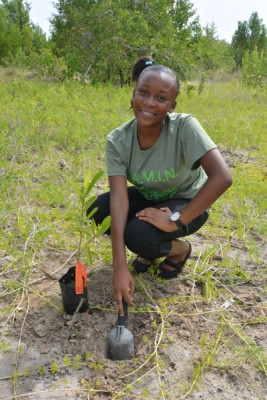
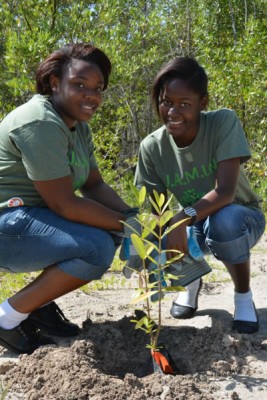
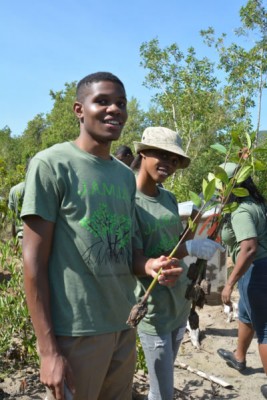
Jamaican high school students restoring mangrove propagules to their natural environment.
After we plant the last propagules, we head back to the school. The students take a survey that evaluates the retention of the knowledge learned throughout the year, attitudes towards mangroves, and an assessment of the project. You can read some of their comments below.
Next, we held a short award ceremony where I was able to present each student with a certificate of completion for the J.A.M.I.N. project. Their science teachers asked the students to include them in their portfolios.
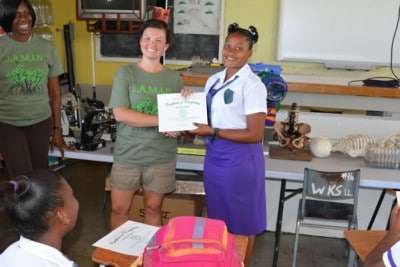
After the ceremony, individual students thanked me for bringing this project to the school while others explained where they were going to university. One student told me that this project inspired her to study science and that she will be attending university next year to pursue an environmental science degree. I was completely touched by the students’ openness and gratitude.
When I look back at the entire project, the planting the mangrove propagules is symbolic. We literally planted mangrove seedlings to restore an area where they have been removed. Throughout this project, I feel that we planted much more than seedlings. We planted the seed of knowledge so that these students can bring about awareness of restoration and conservation of their mangroves for many generations to come.
What did the students have to say about the J.A.M.I.N. project?

“I have learned that mangroves are a very important ecosystem.”
“Doing this project was very nice and I’m happy that I was a part of it.”

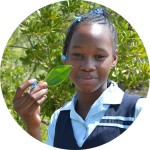
“Doing this“I learned that we should do our best to preserve the mangroves because their destruction affects us all directly and indirectly.” project was very nice and I’m happy that I was a part of it.”
“This was a wonderful experience to interact and help in the development of making my environment a healthy place.”

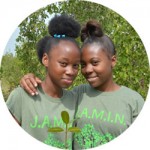
“The field trips visiting the mangroves was a success because we all gained a true understanding about protecting the mangroves, and I definitely think this project should continue.”
“This project should be done in all schools around Jamaica.”

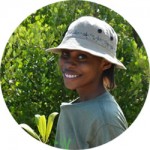
“Since doing this project, I’ve stopped littering because I realize that it affects the mangroves.”
Photos by Amy Heemsoth.


